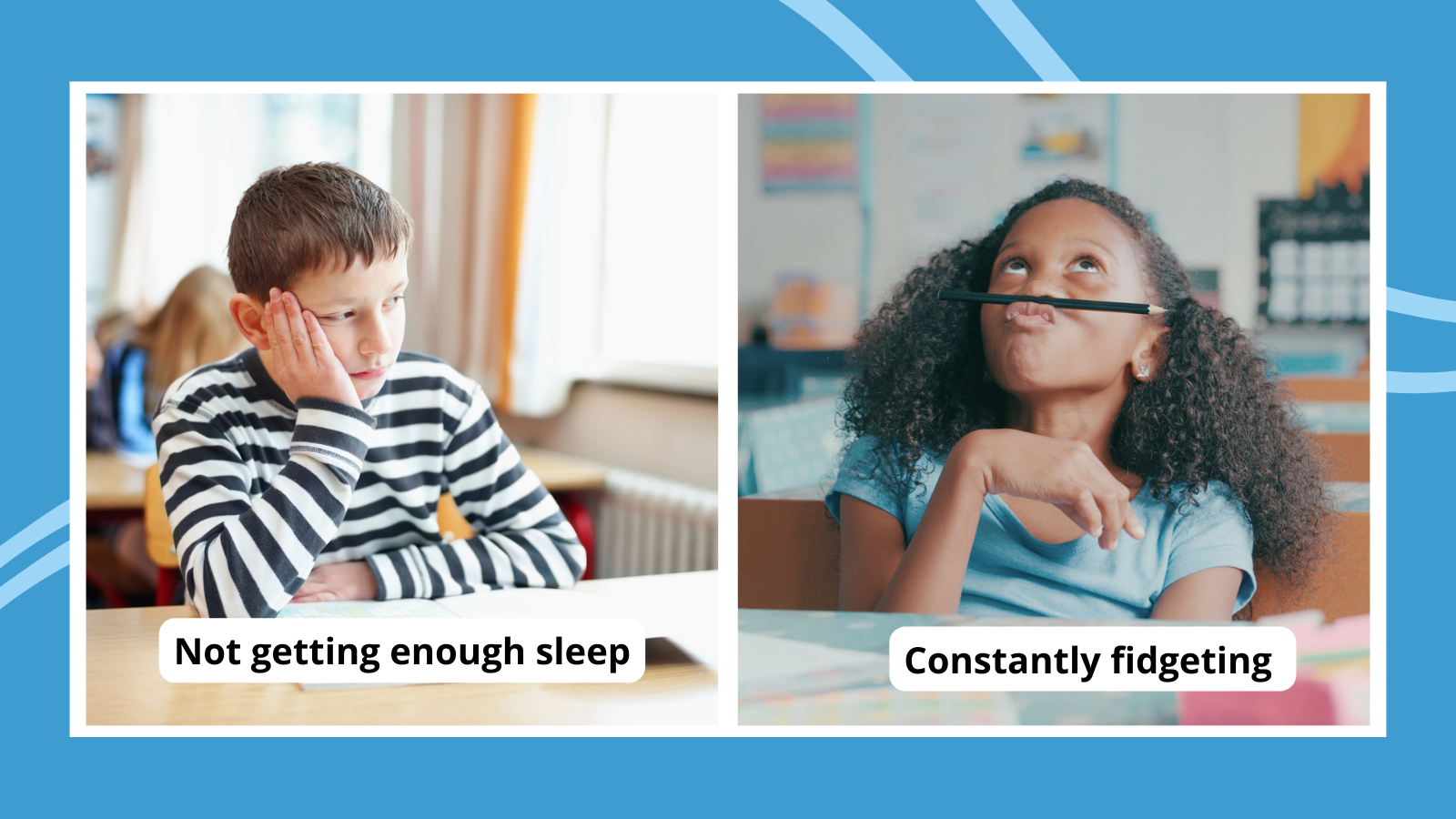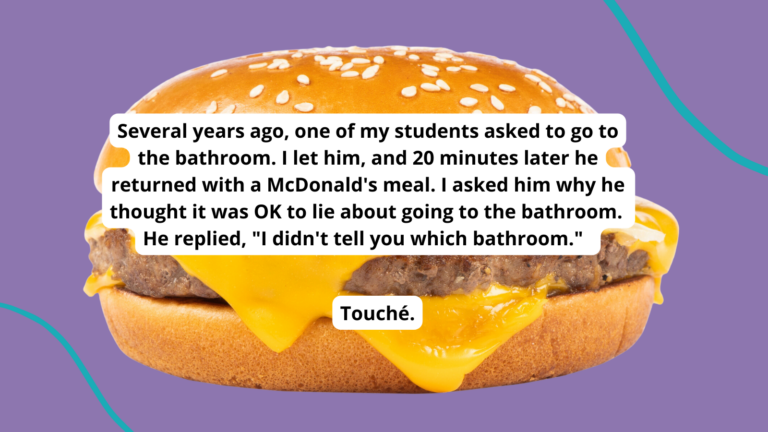There’s an energetic kid, and then there’s ADHD. ADHD, or attention deficit hyperactivity disorder, is the most studied neurodevelopmental disorder in kids. So, we know that there are differences in the brains of kids who have ADHD compared to neurotypical kids. But just because we know a lot about it doesn’t mean that it’s always easy to diagnose. Knowing the signs of ADHD in kids is the first step in helping them.
What is ADHD?
Clinically speaking, ADHD is a long-term brain condition that disrupts a person’s ability to manage their thoughts, actions, and emotions. This means you’ll see people with ADHD struggle to:
- Calm down
- Pay attention
- Stop moving when active
- Regulate mood
- Stay organized
- Focus
- Sit still
Typically, people are diagnosed with ADHD during childhood, but adults can be diagnosed as well. Once a child is diagnosed with ADHD, they’ll live with the condition for their entire life.
How many kids have ADHD?
The Centers for Disease Control estimates that 6 million children (ages 3 to 17) have been diagnosed with ADHD. They estimate that between 6% and 16% of the population has ADHD.
Boys are more likely to be diagnosed with ADHD than girls (13% of boys have an ADHD diagnosis, compared to 6% of girls). And Black and White children are more likely to be diagnosed with ADHD than Hispanic or Asian children.
What are the signs of ADHD?
The signs of ADHD can look a lot like childhood energy, temper tantrums, or bad attitude. However, the key is that these symptoms and signs persist for a period of time, don’t respond to instruction or discipline, and have a significant impact on a child’s life.
There are three broad signs: inattentiveness (trouble focusing), hyperactivity, and impulsivity.
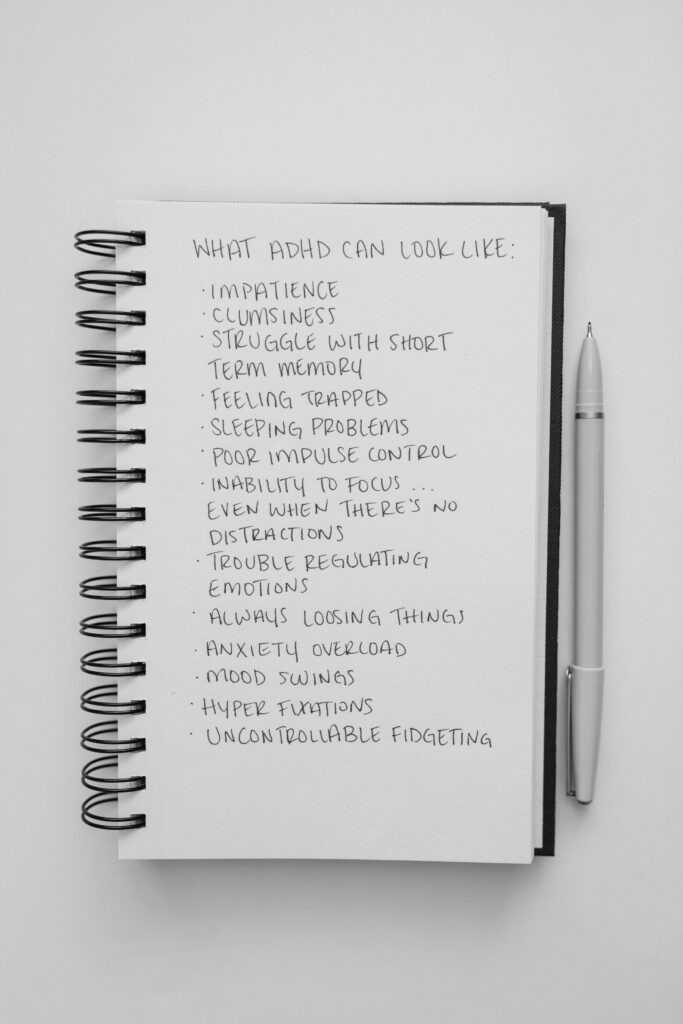
Tara Winstead via Pexels
The signs of ADHD include:
- Being inattentive (not paying attention)
- Short attention span
- Is easily distracted
- Makes careless mistakes
- Forgetful, loses things often
- Unable to stick to tasks that are not preferred
- Appears unable to listen or follow directions
- Constantly switching from one activity to another
- Has difficulty organizing tasks
- Hyperactive, seem to be always moving or “driven by a motor”
- Impulsive, doesn’t seem to think before they act or talk
- Unable to sit still
- Constantly fidgeting
- Unable to concentrate
- Unable to wait their turn
- Interrupting often
- Little to no sense of danger
- Sleep concerns (sleeping too little, waking up in the middle of the night)
It’s important to know that a child may have some signs but not others. They may, for example, have a hard time sitting still and thinking before blurting out, but they may be hyperaware of danger and sleep just fine.
Are signs of ADHD different for girls?
Even though research suggests that ADHD occurs at the same rate in boys and girls, girls may go undiagnosed. One reason may be that the signs of ADHD in girls are more inattentive than hyperactive.
The signs of ADHD in girls include:
- Inattention or trouble focusing on tasks that aren’t inherently interesting to them
- Distractibility or being easily distracted by things going on around them; this could include their own thoughts (think: daydreaming)
- Hyperactivity, which can look like doodling, fidgeting, or wiggling
- Impulsivity, which looks like being overemotional and having difficulty interpreting feelings and making and keeping friends
- Executive-functioning concerns like poor time management, difficulty following multi-step directions, and completing tasks
Kids may try to mask or hide how they’re struggling with ADHD. If you find yourself noticing what looks like spacey-ness, carelessness, not completing work, and confusion, it could be ADHD. In particular, if the child feels like they can’t control their behavior or are frustrated and overwhelmed by the behaviors, that’s a concern. Also, if you notice signs that a child is trying to hide signs of ADHD, like they have extreme perfectionist tendencies or are constantly fidgeting or wiggling, it may be time to take a closer look.
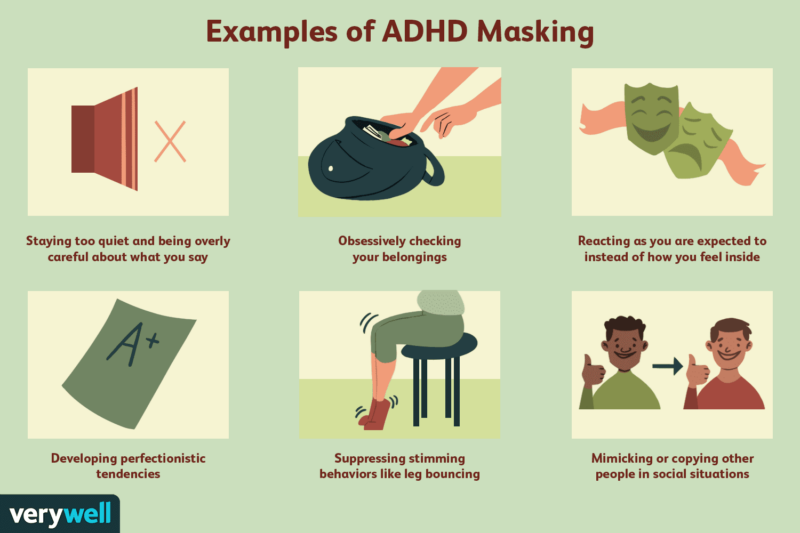
Very Well Mind/Laura Porter via verywellmind.com
Types of ADHD
The features of ADHD have been organized into three types:
- ADHD, combined type: This is the most common type. Children have both hyperactive/impulsive behaviors and are inattentive and distractible.
- ADHD, impulsive/hyperactive type: This is the least common type; children have impulsive and hyperactive behaviors, but not inattention and distractibility.
- ADHD, inattentive and distractible type: This type is characterized by inattention and distractibility without hyperactive behaviors.
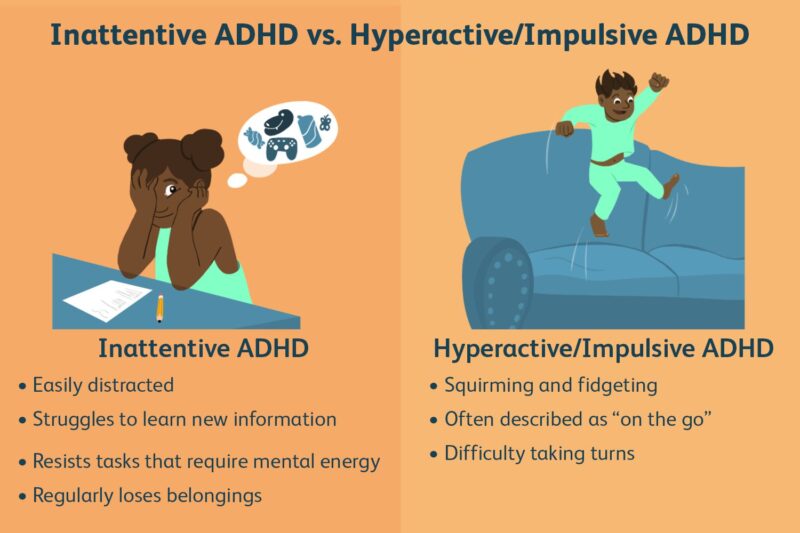
Very Well Health/ADD vs. ADHD via verywellhealth.com
How does ADHD get diagnosed?
If a parent or teacher has a concern about a student, the first step is to visit the pediatrician’s office. The pediatrician will take some information and send out rating scales (the Vanderbilt rating scale is a common one) to the child’s parent and teachers. Using the results from the rating scale, the pediatrician will gauge whether the child’s behaviors, as observed and noted by the adults, are significant enough to be an ADHD diagnosis.
Another path to diagnosis could be through the school. For example, if a child’s behavior is impacting their learning, a teacher could refer the child for a special education evaluation and, as part of that evaluation, a child psychologist may identify concerns related to ADHD. To be clear, ADHD is a medical diagnosis, but an educational evaluation can prompt parents to take a child to the doctor and give the school team information about how to help.
Read more: What is special education?
What if you notice signs of ADHD?
What to do depends on who you are. If you’re a parent, contact your child’s pediatrician. Before the appointment, jot down the behaviors that you see at home and how they’re impacting your child. Do they seem to be “driven by a motor”? Are they defiant? Do they have frequent emotional meltdowns that they should have grown out of? Are they eating, sleeping, and going to the bathroom regularly?
If you’re a teacher, talk to the child’s parent to see if they have seen the same things at home. Be ready to describe (objectively) the behaviors that you see. So, say, “Jimmy has a hard time waiting to talk while raising his hand” instead of “Jimmy interrupts every lesson with his blurting out.” Ask the parent to take the child to the doctor for an evaluation, and be sure to help fill out any rating forms that come your way.
ADHD can be managed with accommodations, support, and, at times, medication. But the first step is noticing and responding to the signs.
Read more: Executive functioning skills kids should develop
Share your thoughts about ADHD in the WeAreTeachers HELPLINE group on Facebook.
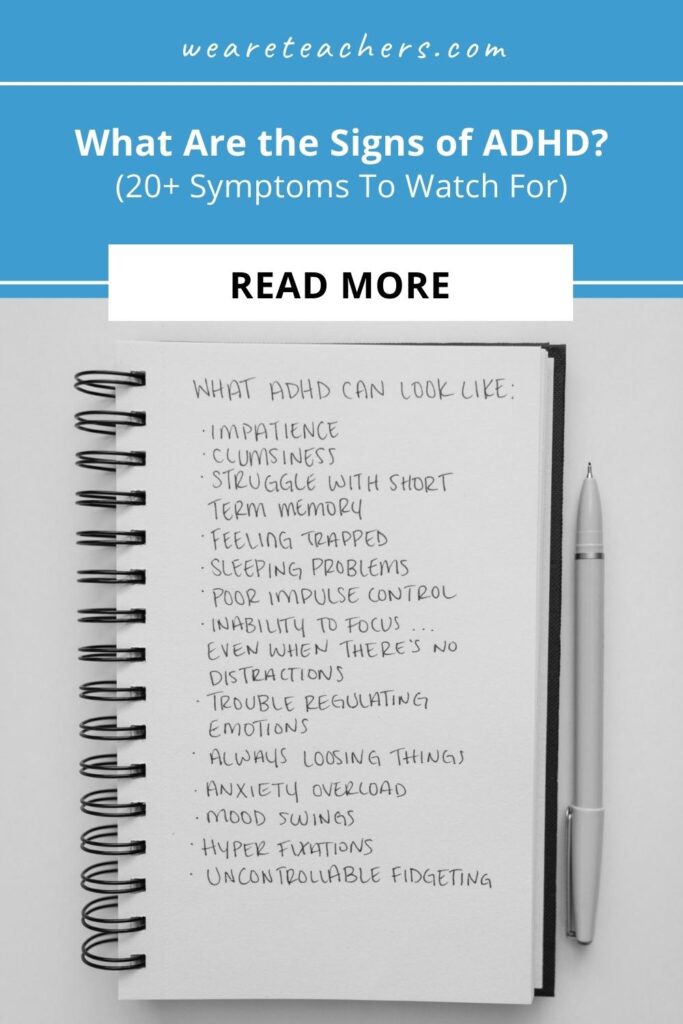
WeAreTeachers
